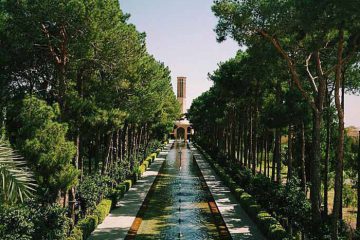Sizdah Bedar | How Iranians Conclude Nowruz
Sizdah Bedar or Sizdebedar, literally translated to “Thirteen Outdoor”, is also known as “Nature’s Day” in Iran. Sizdah Bedar in Iran, is an Iranian festival held annually on the 13th day of Farvardin (the first month of the Iranian calendar), to conclude Nowruz Holidays.
During Sizdah Bedar, people spend time picnicking outdoors. Sizdah Bedar history has its roots back in Zoroastrianism and Iranian mythology and has been practiced in full force for millenniums by Iranians, with specific traditions including Sizdah Bedar food and 13 Bedar Lie. Sizdah Bedar date in the Gregorian calendar falls between March 31st to April 2nd.

#1 What Does Sizdah Bedar Mean?
Sizdah Bedar or Sizdebedar, literally translates to Thirteen Outdoor, which means Iranians spend the day outdoors in the nature.
#2 Sizdah Bedar in Iran
Sizdah Bedar is the final ritual of the Persian New Year Holidays (Nowruz), when people spend the last day of their holidays in festivity, specifically in the nature to prepare themselves for returning to normal life in the year ahead.
Chaharshanbe Souri (a festival of fire on the eve of last Wednesday of the past year) Nowruz, commencing on 1st of Farvardin (Mar 19th to 21st ); and Sizdah Bedar concludes Nowruz, on the 13th day of Farvardin (Mar 31st to Apr 2nd).

Sizdah Bedar in Naqsh-e Jahan Sqaure, Isfahan
On this day, Iranians follow certain rituals which have their roots in the ancient Persian culture. Iranians are resolved to spend Sizdah Bedar outdoors, out of respect for the tradition and some also believe staying in brings bad luck. People pack the leftover nuts and pastry from Nowruz days and go to parks or the countryside, to spend pleasant moments with friends and family playing different games.
-
Sizdah Bedar Food :
No specific meal is traditional of Sizdah Bedar, and people usually pack ready meals, or prepare the meal for lunch during their picnic on barbecues, charchoal fires, etc. However, one traditional snack is never skipped and that is Kahoo (lettuce) and Sekanjabin ( a tasty Iranian syrup of vinegar with honey).

Kahou and Sekanjabin, a Sizdah Bedar Treat
-
Sizdah Bedar Activities :
Iranians spend their time with fun activities on their picnic, with the young playing sports such as volleyball, badminton, etc. , and the elderly playing mind games such as chess and backgammon; while some are busy preparing lunch.
#3 Sizdah Bedar Rituals
Sizdah Bedar Rituals have their roots in the old beliefs of Iranian people:
- Releasing sprouting greens back into nature is a ritual performed at the end of the picnic, which is throwing away the greenery (Sabze) collected for Haft-Seen, the customary setting of Nowruz in Iran, preferably in running water. Touching someone else’s greenery on this day or bringing it back home is considered a bad omen.

Releasing Sabzeh into water streams
- Knotting the greenery is customary for young single people, especially young girls. They tie the leaves of the greenery before discarding it, expressing a wish to find their companion.

- Lie of the Thirteen (or Sizdah Bedar Lie) is the Iranian version of the prank-playing April Fools’ Day ,on the day of Sizdah Bedar.
Read More: Nowruz Rituals in Iran
Read More: Traveling to Iran During Nowruz
#4 Sizdah Bedar History
Sizdah Bedar History in Iran can be dated back to 4,000 years ago, according to Iranian mythology, Zoroastrian beliefs and accounts from Babylonian/Sumerian era. However, available historical records of Sizdah Bedar festival are of Qajar texts (19th and 20th century).
#1 A Day to Celebrate Life
According to Iranian mythology and Zoroastrian holy book of Avesta, Keyumars, of Pishdadian Dynasty, was the first human to descend to earth and rule the world of the time, Iran.
Upon his death, he fell on his left side and his semen fell to the ground which was fertilized by the sun … and after 40 years there grew Mashya and Mashyana as two intertwined rhubarbs, which grew into a man and a woman. Mashya and Mashyana consummated their marriage on the 13th day of Farvardin, and bore humans to the world. They are believed by Avestan texts to be the first parents of human.
Iranians, hence, celebrate this occasion on 13th of Farvardin as Sizdah Bedar. Knoting two blades of Sabzeh (the Greenery from Haft-Sin) or grass by the young singles is the symbol of commemorating Mashya and Mashyana’s marriage, in a wish to find their partner in the coming year.
#2 A Day to Pray for Rain
13th day of Farvardin is named Tir, after the deity of rain, in Zoroastrianism. Hence, Iranian peasants, since ancient times, venerated Tir deity of rain(Also called Teshtar) on this day and prayed to her to overcome the omen forces of drought and bring rain and abundance of harvest to their farms in the coming year. Coming out to the nature in festivity on this date, Sizdah Bedar, hence is also in veneration of Tir deity of rain.
#3 A day of Festivity
According to Iranian mythology, Jamshid*, another king of Pishdadian Dynasty, would celebrate the 13th of Farvardin, Sizdah Bedar, in the nature, giving grand feasts to his people.
Therefore, against the popular fallacy, the number 13th of Farvardin, 13 Bedar, has never been of bad omen among ancient Iranians, but a day to express reverence to life and nature.
*Jamshid, is a highly revered king in Iranian mythology. Persepolis of Shiraz has been and still is called The Throne of Jamshid, since old times according to myths.


